- remind me tomorrow
- remind me next week
- never remind me
The X Button
Way of the Wii
by Todd Ciolek,

Certain video-game mysteries may never be solved. What happened to Banon in Final Fantasy VI? Did any copies of the canceled NES game Ultimate Journey survive? Why is the final boss of Ikari Warriors already dead when you reach him? Yet there's one mystery that stands above all others as far as I'm concerned: did anyone ever find those prize-winning Trouble Shooter cards?

Trouble Shooter is a great, goofy Sega Genesis game that stars mercenary heroine Madison and her assistant Crystal. It enjoyed good press back in 1991, and Vic Tokai even put together a contest with some help from GamePro. The rules were straightforward: five Crystal cards and two Madison cards were randomly packed into copies of Trouble Shooter. Finding a Crystal card got you a Game Gear, while the even rarer Madison card entitled the bearer to a Game Gear and an appearance on GamePro's new TV series.

The puzzling thing? I've never seen any evidence that these cards existed. Given the modern trend of eBay sellers hawking every possible piece of obscure video-game memorabilia, I find it strange that there's no record of what the cards looked like. Were they based on the weird North American box-art versions of Madison and Crystal, or did they use the anime-styled art seen on the Japanese cover and in the American manual? Did the lucky winners end up on GamePro TV even though it was canceled not long after the contest deadline?
It's possible that nobody won the contest—not even the folks who just entered by mailing off their trivia entries (the answer is Colonel Patch, by the way). Perhaps Vic Tokai's Trouble Shooter marketing just ran out of steam. The game apparently wasn't successful enough to get its sequel a ticket to North America in 1994. Instead of releasing Trouble Shooter 2, Vic Tokai's domestic branch localized a crappy Sonic clone called Socket. Why? That's another mystery.
NEWS
TALES OF XILLIA HAS RELEASE DATE, POTENTIALLY ELUSIVE BOX SET
It was easy to forget about Tales of Xillia for a while. Namco Bandai had Ni No Kuni to launch, so the poor Tales game went without a release date or really solid plans for its North American debut. With the recent Global Gamers Day, Namco Bandai marshaled its forces behind Tales of Xillia. It now has an August 6 release date and a nice fat Collector's Edition.

The Tales of Xillia box set includes an artbook, a soundtrack CD, and a Milla Maxwell figure. All of this runs $99.99 compared to the standard-edition's $59.99 price tag, and most of the extra cost seems centered around the Milla statuette. It's not as nice as the Alter one that costs more than certain mortgage payments, but it doesn't look all that bad. The figure was apparently available in prize-catcher machines in Japan, so anyone who buys the North American special-edition can tell themselves that they dropped about $30 in a claw-crane game.
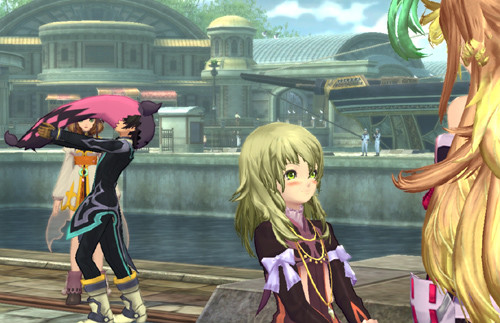
This deluxe-sized Tales of Xillia probably won't be as hard to find as Namco Bandai's Ni no Kuni set, but it's evidently a limited offer. So far, the only place to buy it is GameStop; at this writing, Amazon still thinks the game is coming out in December, and Best Buy has only the regular edition. If you want it, now might be the best time to reserve it.

Namco Bandai also released footage of the game's battle system, and fans are all gabbin' about the English voices, Milla's in particular. Some say she sounds too deep and monotone, but bear in mind that she's supposed to be a straight-faced, semi-divine warrior emissary unschooled in the social mores of humankind. Besides, there's nothing wrong with a deep-voiced woman. Just look at Venture Bros.
LIBERATION MAIDEN GETS A SEQUEL, BUT NOT A SHOOTER
Liberation Maiden was not my favorite game in Level-5's Guild01 omnibus (Crimson Shroud was), but it remains a perfectly fine shooter morsel. It's also the only game about a teenage girl president jumping into a mecha and defending Japan against pollutant-spewing invaders. That premise may be wht Liberation Maiden earned a sequel on the PlayStation 3.

Unlike the 3DS game pictured above, Liberation Maiden Sin is a visual novel that follows one Kiyoto Kaido, psychic assistant to President Shoko Ozora. The robot-piloting Shoko remains a prominent character, of course, and early reports suggest that we'll see her presidential cabinet members, most of whom will be women. I admit that a visual novel isn't the form I'd want a Liberation Maiden sequel to take, mostly because it makes for worse odds of ever seeing an English version.
CAPCOM'S ARCADE CABINET REACHES LAST ENTRY, HAS DISAPPOINTING SECRETS
The Capcom Arcade Cabinet launched back in February with a pretty neat idea: 1980s arcade games emulated perfectly and with plenty of extra features. Today brings the collection to a close, with 1942, SonSon, and Pirate Ship Higemaru available on Xbox Live Arcade and the PlayStation Network. For those who've bought all of the other games (or who wait until next month to pick up the $29.99 all-in-one bundle), there are two bonus titles: the shooters Vulgus and 1943: Kai
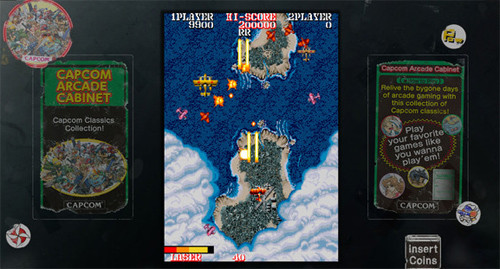
That's a bit of a letdown, considering that rumors claimed Strider and Ghouls 'N Ghosts were the two secret titles. Granted, Vulgus certainly has its place in the collection, being the first Capcom arcade title. It's also not surprising that 1943: Kai was included. An enhanced version of 1943, it wasn't available in America until the Capcom Classics Collection brought it here in 2005. Yet neither is as impressive a piece of Capcom history as Strider or Ghouls 'N Ghosts.
But maybe there's more to this. Maybe Capcom's overlords didn't include Strider because they're planning a separate Strider revival, as evidenced by those new Strider logos spotted in Xbox Live directories. Yes, that's what I will believe. Because it's exactly what I want.
FEATURE: THE WII RETIRES
Pandora's Tower arrives this week, and it's more than an inventive, under-the-radar action game. It's also the last notable release for the Nintendo Wii, and it seems a good place to mark the end of the system's career. Nintendo's already replaced it with the Wii U, and the usurpation was made even more effective by the new system's backward compatibility with all things Wii. In fact, the Wii's Forecast, News, Check Mii Out, Everybody Votes and Nintendo Channels will shut down on June 28. Now's a good time to look back on Nintendo's big success.
And the Wii was a success, of course. It engaged audiences well outside the video-game industry, and it outsold both the Xbox 360 and PlayStation 3. It also marked a strong return from the years of the Nintendo 64 and GameCube, both consoles that endured rather than excelled.
I like the Wii. I like it in ways I can't really like its competition. The PlayStation 3 and Xbox 360 are fine consoles, but their libraries aren't as distinct. Nearly all of my favorite PlayStation 3 games are also on the Xbox 360, and vice versa. The Wii, in contrast, has a bunch of intriguing little games that are only on the Wii: Tatsunoko vs. Capcom, Sin and Punishment: Star Successor, Sky Crawlers: Innocent Aces, and many first-party Nintendo offerings. Yet this would be no real retrospective if I didn't harp on the disappointments of the Wii, on the games that were underrated or unreleased on these shores.
THE UNDERRATED
The Wii library's greatest problem stemmed from its rampant mainstream success. The console became a haven for party games, kid-friendly titles, and other “casual-user” offerings, and many were quick to stereotype it as an underfed gimmick for the younger set. The Wii never attracted the same base as the Xbox 360 and PlayStation 3, where the likes of Call of Duty, Gears of War, and other M-rated attractions hold considerable sway. However, anyone who ignored the Wii entirely missed out on some excellent games.
The Wii never lacked support from Nintendo, and it enjoyed a number of excellent Mario titles, two good Zelda outings, some solid Kirby games, and a long-awaited Metroid follow-up that…well, it had decent gameplay. However, the Wii was also home to a number of lesser-known titles from lesser-known developers, and a lot of them went neglected. Violent attractions like MadWorld and The House of the Dead: Overkill didn't fare so well, and while Suda51's original No More Heroes was a success and expanded to other systems, its sequel did worse business and never ventured beyond the Wii.
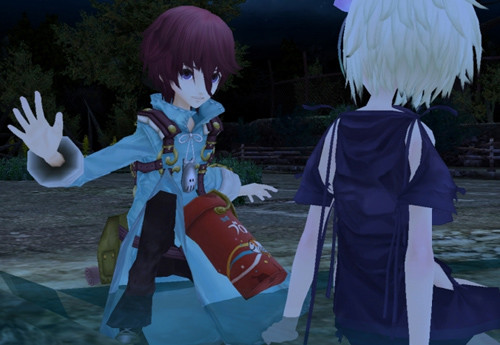
Less raucous Wii games also struggled to stand out. Fragile Dreams: Farewell Ruins of the Moon is an unpolished but absorbing take on the survival-horror theme, using the Wii remote as a flashlight to guide a young man through an eerie, abandoned world. A similarly subdued charm drives Lost in Shadow, which Hudson Soft scooted out shortly before their American branch imploded. The game presents a side-scroller through the shadows of a tower's varied stages, striking the same tones as Fumito Ueda's Ico. At least other under-appreciated Wii games got second chances: Vanillaware's beautiful side-scroller Muramasa: The Demon Blade and Yoshiro Kimura's strategic charmer Little King's Story were both ported to the Vita.
THE UNDERRATED FROM NINTENDO
Most curious were the unsung Wii heroes backed by Nintendo. In between the usual round of familiar titles, Nintendo branched out in uncharacteristic directions with the help of various developers. Monolith Soft fashioned a magnificent, ambitious RPG with Xenoblade Chronicles, while Hironobu Sakaguchi's Mistwalker put together a more focused and dramatic treatment of the genre with The Last Story. The aforementioned Pandora's Tower was another Nintendo-sponsored experiment, one in which developer Ganbarion paired chain-driven combat with the gruesome idea of harvesting monsters for the heroine's dining displeasure. All three games arrived here, but it was a rough road. Perhaps spurred by the fan campaign of Operation Rainfall, Nintendo released Xenoblade as a GameStop exclusive (and it's now rather expensive on the secondary market). The company declined to bring out The Last Story or Pandora's Tower, and it fell to XSEED Games to snatch them up.
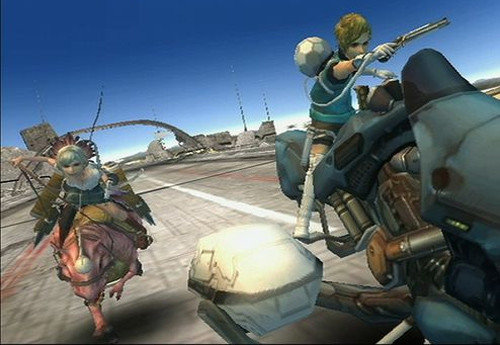
Perhaps Nintendo simply grew dismayed with attempts at releasing games off the beaten path. Treasure's Sin and Punishment: Star Successor proved a sadly perfect example. It was never going to be a Zelda-level hit in North America; its rail-shooter mechanics seem initially shallow and its visual style doesn't quite fit into any popular vein. Yet it finds Treasure at their best, offering creative stage layouts and a sharp intensity that won over many critics. This wasn't enough to make it a success in North America, though, and Nintendo apparently learned from the example.
THE UNIMPORTED
Xenoblade, Pandora's Tower, and The Last Story were the fortunate ones in the Wii's neglected import library. Nintendo sponsored many other intriguing titles that, for one reason or another, didn't come to North America. Chief among them is Kenichi Nishi's Captain Rainbow, a delightfully strange adventure game in which a humble superhero aids an island full of B-list Nintendo characters. He trains Punch-Out's Little Mac, assists Devil World's main villain, and determines the gender of recurring Mario character Birdo. All of this apparently proved a bit too much for Nintendo's English-speaking markets.
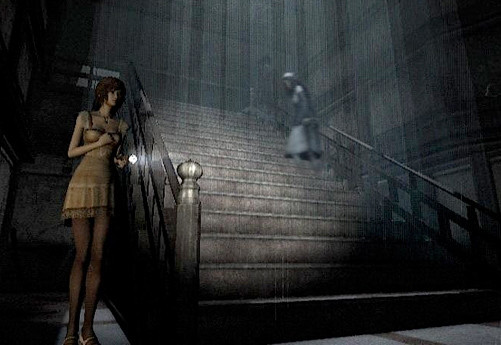
Fans seem to hold the biggest grudge over Zero: Tsukihami no Kamen, or Fatal Frame IV as they call it. It's part of that ghost-photographing horror series originally created by Tecmo, and it draws together a trio of kidnapping victims to explore the island that once held them. Filled with the sort of dank scenery and cryptic suspense that people were calling “J-horror” a few years ago, Fatal Frame IV seemed a lock for international release upon its 2008 debut. Nintendo declined, and no other publisher took up the game. Genre fans made do with Hudson Soft's Calling.
Nintendo similarly ignored one of their bloodiest Wii outings, Sandlot's fantasy-action game Zangeki no Reginleiv. The game follows twin Norse gods Frey and Freia as they brutalize their way across battlefields with all the scope and carnage (and multiplayer co-operation) of Sandlot's well-liked Earth Defense Force series. Was it too grim for Nintendo to release in North America? Or was it just too likely to flop?
Many DS owners will remember Trace Memory, a graphic adventure title that followed heroine Ashley Mizuki Robbins in a search for her father. It received a Wii sequel called Another Code: R – A Journey into Lost Memories, but not a North American release to accompany it. The game shipped only in Japan and Europe, much like Nintendo and Cing's Last Window for the DS. Also puzzling was the fate of Disaster: Day of Crisis, an action game seemingly tailored for Western audiences. Stuffed with blockbuster-movie scenes of destruction and corny dialogue, it nonetheless emerged only in Japan, Europe, and Australia.
Other publishers saw their promising Wii titles limited to Japan. Enterbrain's Earth Seeker is a complex sci-fi take on the idea of a creature-raising RPG, but poor sales doomed it even in the Japanese market. Then again, no one really clamored for overseas releases of fighting games like Takara's new Toshinden or Milestone's Twinkle Queen. Some things just weren't worth the fuss.
Perhaps it's a bit mean-spirited to recount the ways the Wii's catalog disappointed. All things said, it's a fine system with a solid lineup that, as I mentioned before, has the most unique offerings of this generation. I'm sure that many of my readers can recall their own letdowns about the console, but I'm equally certain that all of us can find more than a few games to like there.
NEXT WEEK'S RELEASES
BLACK ROCK SHOOTER: THE GAME Developer: Imageepoch
Developer: ImageepochPublisher: NIS America Platform: PSP/Vita (PlayStation Network Only) Release date: April 23 MSRP: $19.99 Black Rock Shooter may have started as nothing but an illustration of a blue-eyed futurepunk pixie in a trench coat, but that's good enough to spawn a media franchise in this age of Hatsune Miku. A Black Rock Shooter PSP game soon joined the anime, manga, and merchandise, and it was a minor surprise when NIS America and Imageepoch swore to release it in North America. After over a year of curious silence, they're making good on that promise. Well, mostly. The game's available in the United States, but Canada and Mexico are left out. According to NISA, it'll be available in the following European countries: Austria, Belgium, Bulgaria, Cyprus, the Czech Republic, Denmark, Estonia, Finland, France, Germany, Great Britain, Greece, Hungary, Ireland, Italy, Latvia, Lithuania, Luxembourg, Malta, the Netherlands, Poland, Portugal, Romania, Slovakia, Spain, and Sweden. So the Black Rock Shooter fans of, say, Norway will have to use PSN accounts coded for other nations. In Black Rock Shooter tradition, the PSP game shuns other continuities and dumps its eponymous heroine in a future full of broken cityscapes and crushing despair. This is the result of an alien invasion that's killed humankind down to a pocket of survivors, and their only hope lies in Black Rock Shooter and the enormous cannon she wears on one arm. She's faced with an assortment of alien leaders (most of whom look weirdly human themselves), and the mysterious White Rock Shooter shows up as well. Yes, White Rock Shooter. Most sources classify Black Rock Shooter: The Game as an RPG, but it imitates an action title whenever it can; BRS races and leaps around the alien-demolished landscape, and while battles erupt as she runs into enemies, they're handled with quick blends of shooting and blocking. Missions grant BRS new skills and firepower, and the game's boss encounters mix things up with anime-styled cinematics. At certain points, our multimedia heroine also hops onto a hulking motorcycle and speeds through the rather long city streets of this blighted future. It's arguably the most detailed take on Black Rock Shooter yet, but it remains to be seen if the whole thing will fly in the West. Will its potential fans be put off by the lack of a physical release bundled with a Black Rock Shooter figure to stick on the bookcase? I hope not.
|
Capcom has Dragon's Dogma: Dark Arisen, which expands last year's action-RPG with an imposing new isle, 25 more monster varieties, a smattering of additional skills, and a Wizard class for characters. Owners of the original game also get unlimited Ferrystones and a load of Rift Crystals to soothe the guilt of buying a game twice.
The latest Guilty Gear game arrives on the Vita, though Guilty Gear XX Accent Core Plus R is just a technical upgrade. It adjusts the moves and priorities of the existing roster for Accent Core Plus (which came to Xbox Live Arcade and the PlayStation Network not long ago). That might appeal largely to the competitive-fighter fans, but I'm just glad to have Guilty Gear on yet another system.
discuss this in the forum (51 posts) |
this article has been modified since it was originally posted; see change history